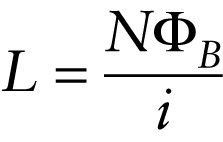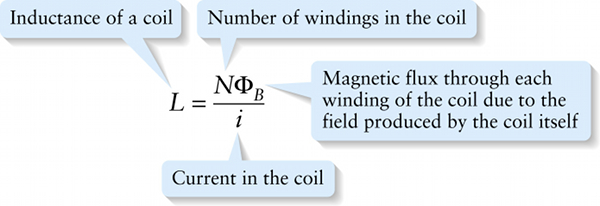Chapter 21. Definition of inductance (21-13)
Question
t26NnGmjBGy58ZExormy1O6UqyVmnxiw
Question
NcYtjQ1tBCSudE4bOMVflgKgaqbXnUzgccLmqNmKRrcFHDKo
Question
6M2Rm/88LDgwMUL7xMkWLksKmhrwymTwjwUMbZBMw5HZ53uq02Gig6mZJfzM1KwAIDCFozIQcOA6nbqgdv2lKGjnAFm2XMKmhXrNizOD0w0BrSJzqvNXeteRsZInP7/U
Question
w/K17Ox23sUB5u1+vinEzDCY4Eyh5zk9
Review
Consider a coil of \(N\) windings in which there is a current \(i\). This current causes the coil to produce a magnetic field, and the flux of this field through each winding of the coil is \(\Phi_B\). The total flux through all \(N\) windings is then \(N \Phi_B\). We define the inductance of the coil (symbol \(L\)) as the total flux divided by the current that produces it:
.
